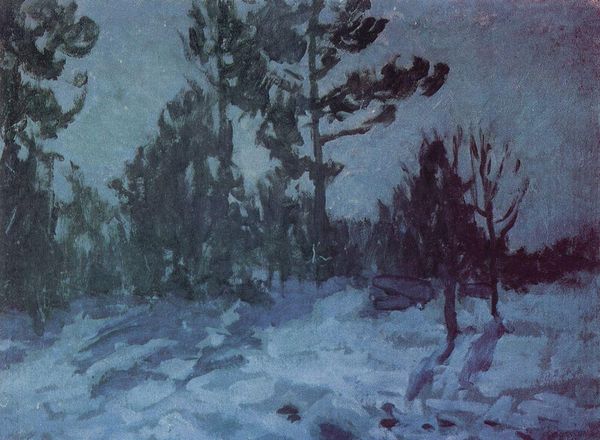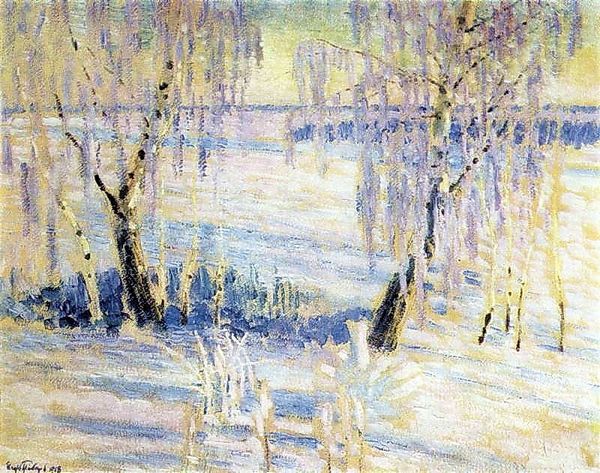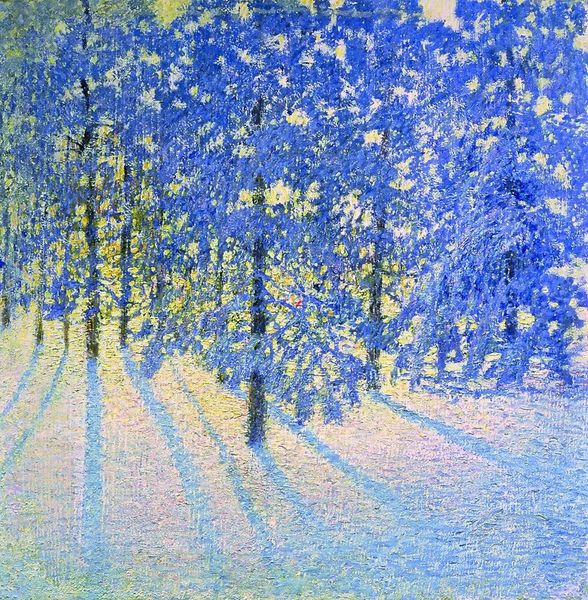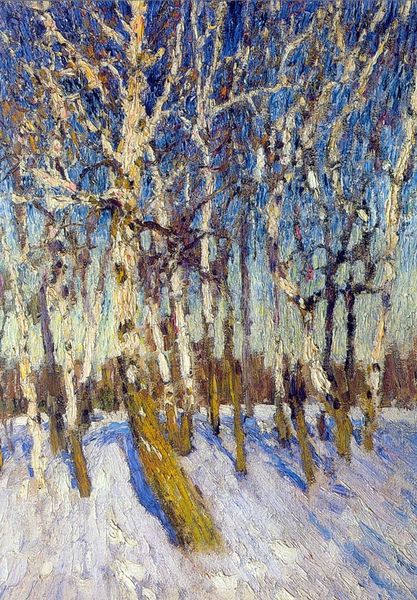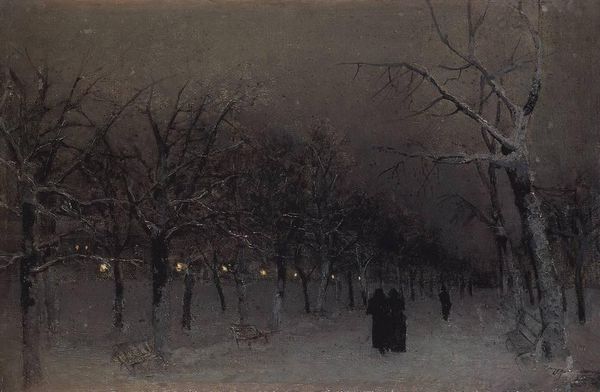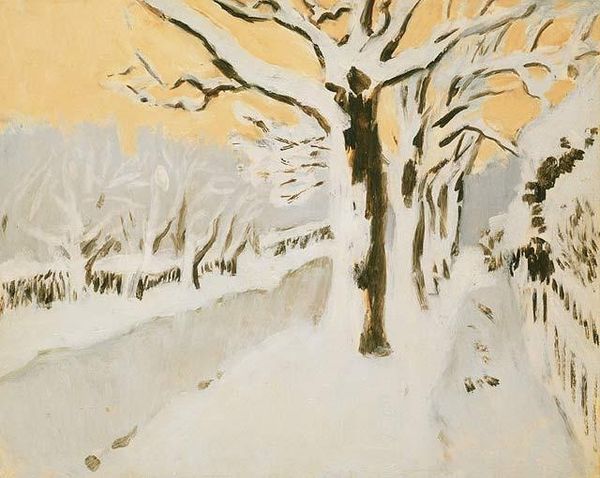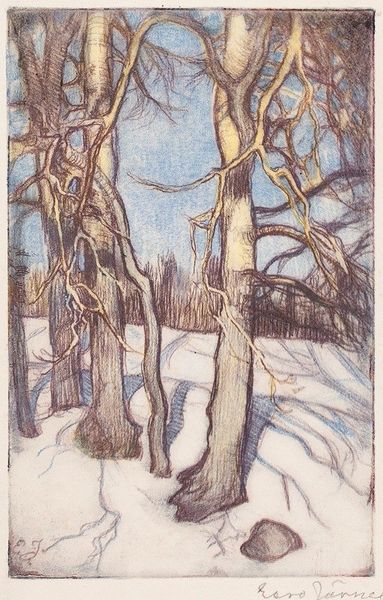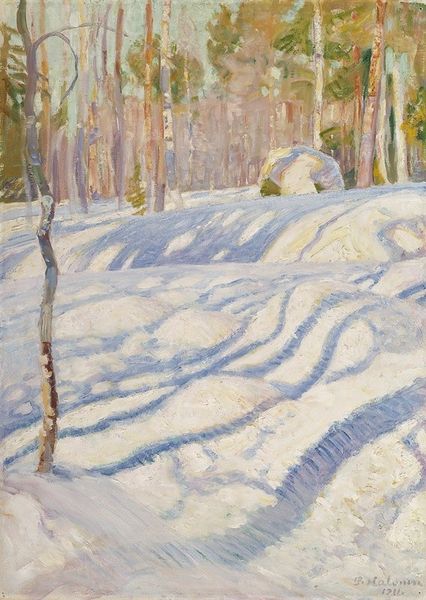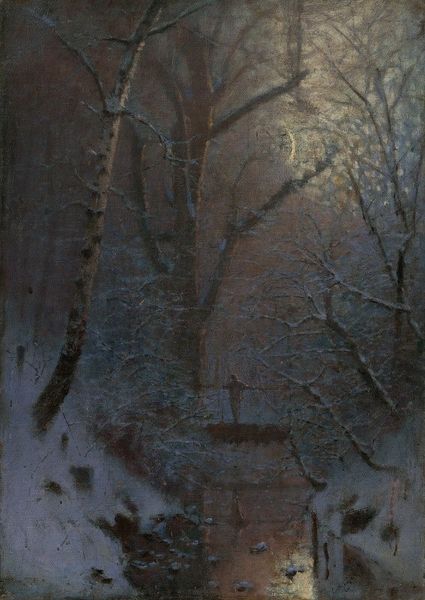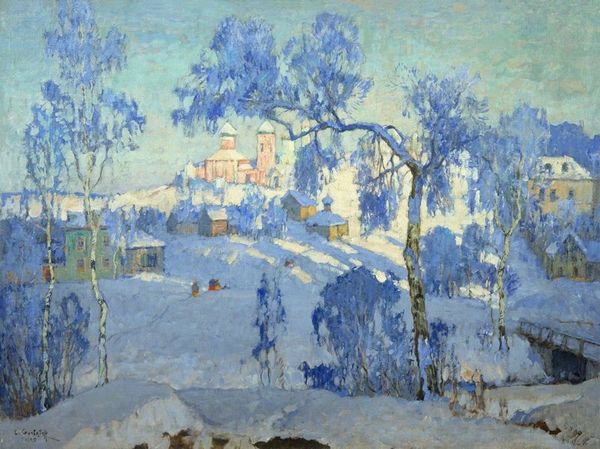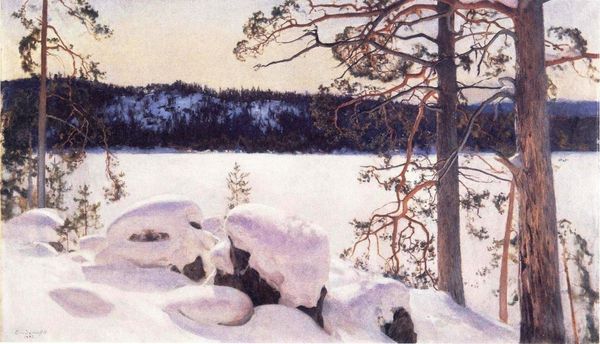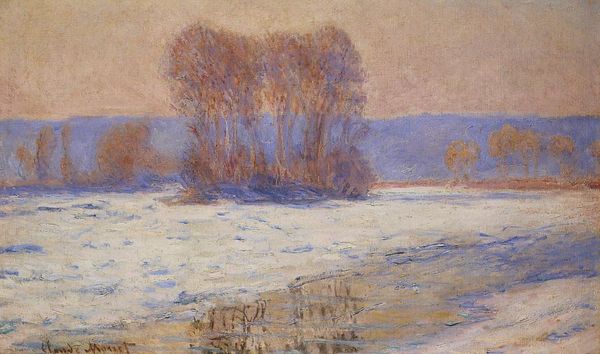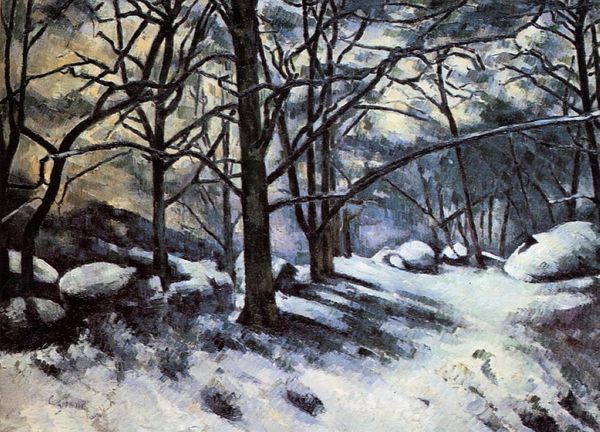
painting, oil-paint, fresco
#
narrative-art
#
painting
#
oil-paint
#
landscape
#
figuration
#
fresco
#
oil painting
#
symbolism
#
russian-avant-garde
Copyright: Public domain
Editor: So this is Mikhail Nesterov’s, “The Vision to Ivan Susanin Michael's Image,” created in 1906 using oil paints, likely on canvas. I’m immediately struck by the almost monochromatic blue and how it contrasts with the ochre figures. What's your take on this piece? Curator: What interests me is the physicality of the oil paint itself, how it's been layered to depict this spiritual narrative. The materiality contradicts the ethereal subject matter, don't you think? How does this grounding in the physical, the very labor of applying paint, affect your understanding of the 'vision'? Editor: That’s an interesting point. I hadn't thought about the contrast between the spiritual subject and the physical act of painting. Does the way Nesterov applies the paint – those visible brushstrokes in the snow – challenge the notion of a smooth, illusionistic 'vision'? Curator: Precisely. Look at the facture of the paint surface, almost like a fresco. It reminds me of discussions about labor, the worker’s hand evident in the artwork, defying traditional boundaries between ‘high art’ and mere craft, especially given the narrative revolving around a peasant hero. What sort of market context might explain this stylistic choice? Editor: Maybe this embrace of visible labor in art, in a way, elevates the labour of Ivan Susanin himself, especially within the socio-political landscape of early 20th century Russia. The viewer then reflects on who or what labor is being glorified here through visual material. Curator: Absolutely. The medium isn’t neutral; it actively participates in shaping the narrative. So what fresh insight do we take away now? Editor: Seeing it from the materialist lens helps to situate the work historically, not just as a religious piece, but as a product of specific social and economic conditions that elevated folk labour. Curator: Exactly. Thinking about art this way truly changes our perspective, making us appreciate the cultural nuances expressed.
Comments
No comments
Be the first to comment and join the conversation on the ultimate creative platform.

